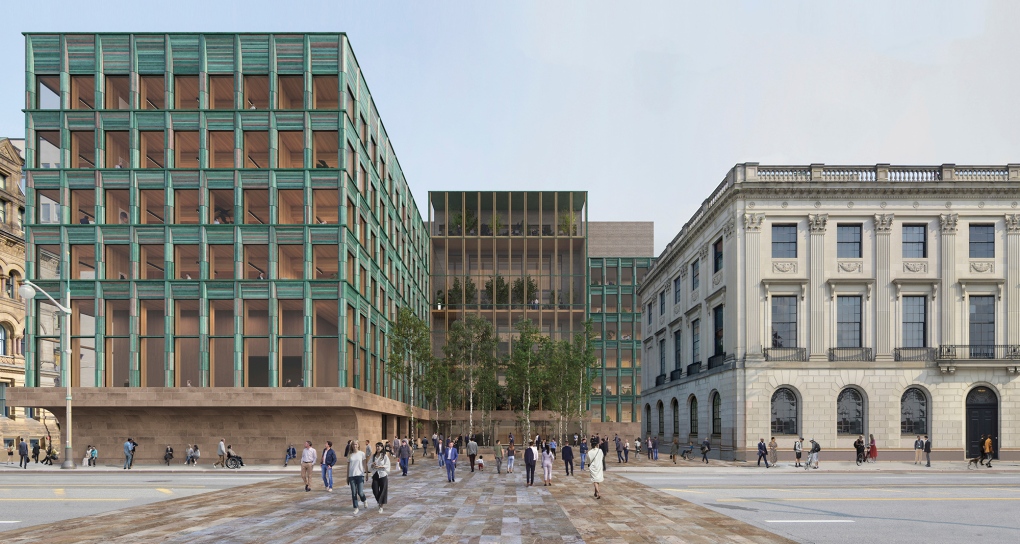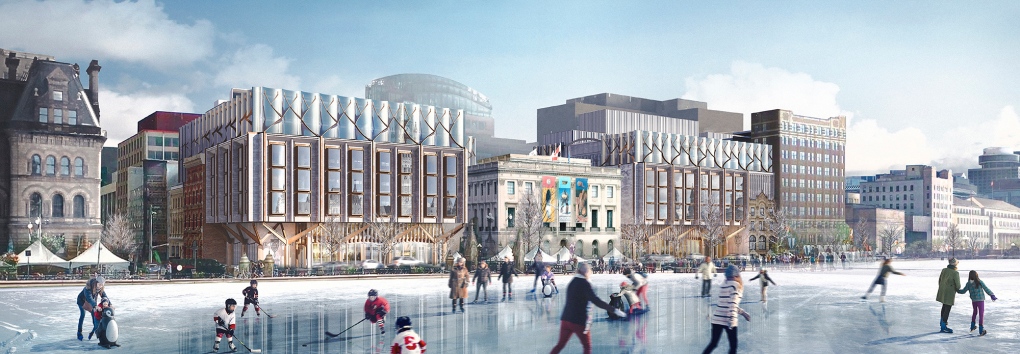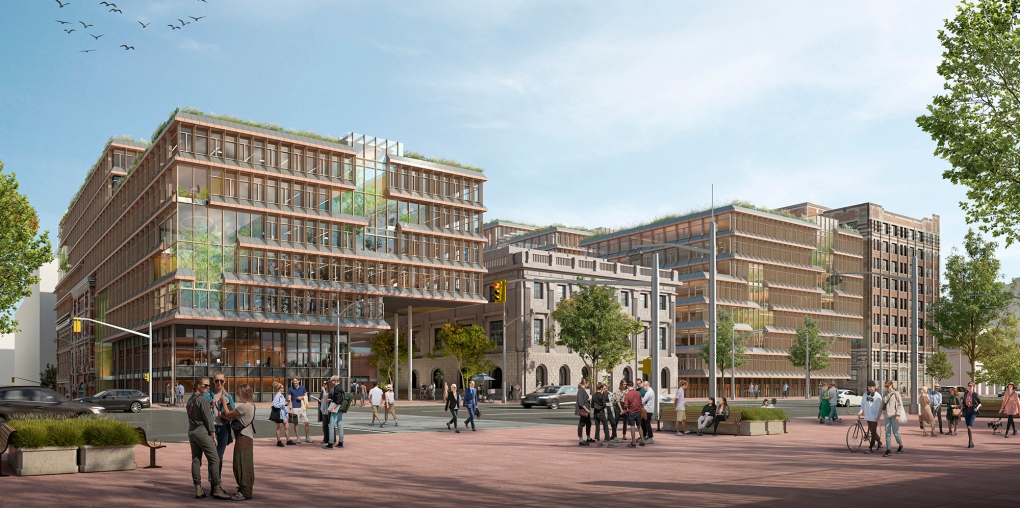A city block directly across from Parliament Hill is inching closer to a much-needed overhaul.
The area, known as Block 2, sits in the shadow of Center Block’s Peace Tower, one of Canada’s most iconic buildings.
“I mean, that space has been crying out to be built on,” said John Ralston Saul, who is an honorary adviser to the Royal Architectural Institute of Canada for the Block 2 design competition.
Public Services and Procurement Canada and the Royal Architectural Institute of Canada launched the architectural design competition to redevelop the 9,800-square-meter area in May 2021.
This week an expert jury will choose a design from six finalists.
Later this spring a winner will be unveiled, according to the federal government.
“We’re building maybe the most important public building in Ottawa since the rebuilding of the Center Block after the First World War,” said Saul.
Judges will finish evaluating the short list proposals Friday, comparing the functionality, aesthetics, and sustainability of the designs.
“The building materials reflect the building materials of the Parliament Buildings,” said David Flemming, the Heritage Ottawa Advocacy Committee Chair. “There’s a lot of limestone there, but yet there’s a lot of wood, which has very low carbon ratings.”
Block 2 sits between Ottawa’s Wellington Street in the north, Sparks Street in the south, O’Connor Street to the west, and Metcalfe Street to the east.
Currently the area has two empty lots, and 11 aging buildings.
Two of those structures, including the former US Embassy at 100 Wellington Street, have already been dedicated for use by Indigenous peoples.
The hopeful bids for the Block 2 revamp need to incorporate several heritage buildings within their design.
“The redesigned block will provide office space for the Senate and the House of Commons and will allow for the future consolidation of parliamentary accommodations, including space for the Library of Parliament,” according to the Public Services and Procurement Canada website. “It will also include renovated retail space on the Sparks Street Mall.”
Here are the six finalists:
Zeidler Architecture with David Chipperfield Architects
This bid from Toronto-based Zeidler Architecture and David Chipperfield in the UK has a proposal “that weaves together past, present and future to create a tapestry of forms and styles,” said David Chipperfield during a presentation on April 11. The design features a public square aligned with the Peace Tower across the street, retaining each existing heritage building with “net zero structures,” and landscaped courtyards inside the structures. The project would use “natural materials” in a nod to the sustainability of Indigenous cultures.
NEUF architect(e)s with Renzo Piano Building Workshop
The two uniform boxes adorned with a glass and limestone facade feature prominently in the design from Paris-based Renzo Piano Building Workshop and its Canadian partner NEUF architect(e)s. The roof has space for trees and solar panels as the project aims to incorporate a sustainable urban block connected with nature.
Diamond Schmitt Architects with Bjarke Ingels Group (BIG), KWC Architects and ERA Architects
This consortium of Canadian and US-based firms features office facades with slanted grid made of Queenston limestone, with rooftop green space. The modern proposal aims to “integrate the Indigenous peoples’ space and to reimagine the fourth wall of the parliamentary lawn,” said Danish architect Bjarke Ingels during the presentation.
Provencher Roy
This Montreal-based firm consulted with Indigenous urban planner Aaron Aubin to guide its design. The central focus is a stunning round structure aligned across from the Peace Tower, called the Truth and Reconciliation Tower by architects. “Restoring, reconciling and renewing means moving away from the traditional square in favor of the indigeneity and universality of the circle form,” said Nicolas Demers-Stoddart, the Provencher Roy lead architect.
Wilkinson Eyre with IDEA Inc.
London-based firm WilkinsonEyre collaborated with Ontario firm IDEA Inc. to create a proposal “inspired by Canadian nature.” The design aims to balance the historic buildings in Block 2 with modern structures, while incorporating wood accents woven through the design to symbolize Canadian forests and Ottawa’s connection to the timber industry.
Waston MacEwen Teramura Architects with Behnisch Architenkten
Ottawa-based Watson MacEwen Teramura teamed with the German-American firm Behnisch with a proposal that emphasizes sustainability, with solar panels on the outside, to winter gardens inside, nurtured by sunlit corridors and atriums. “This philosophy of integration with nature is at the core of our design,” said Michelle Lee, an architect with the bid.





